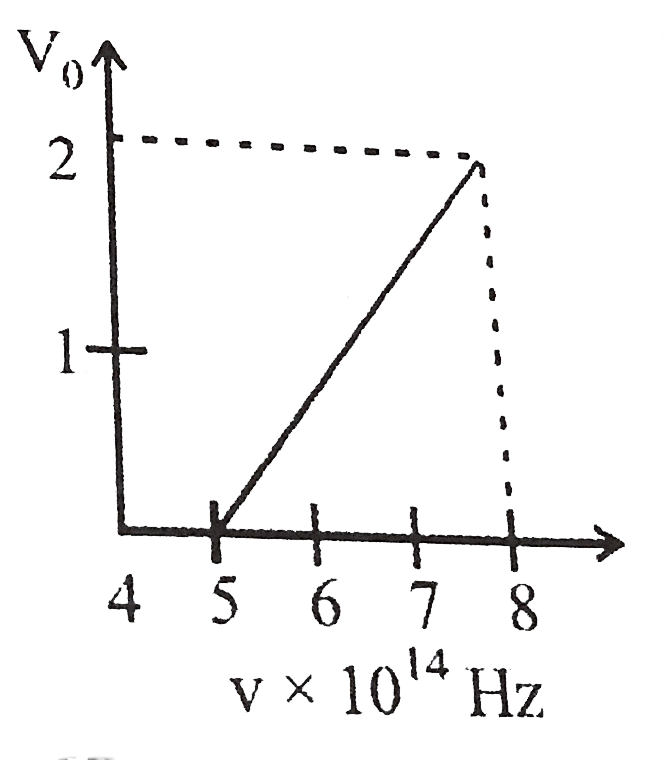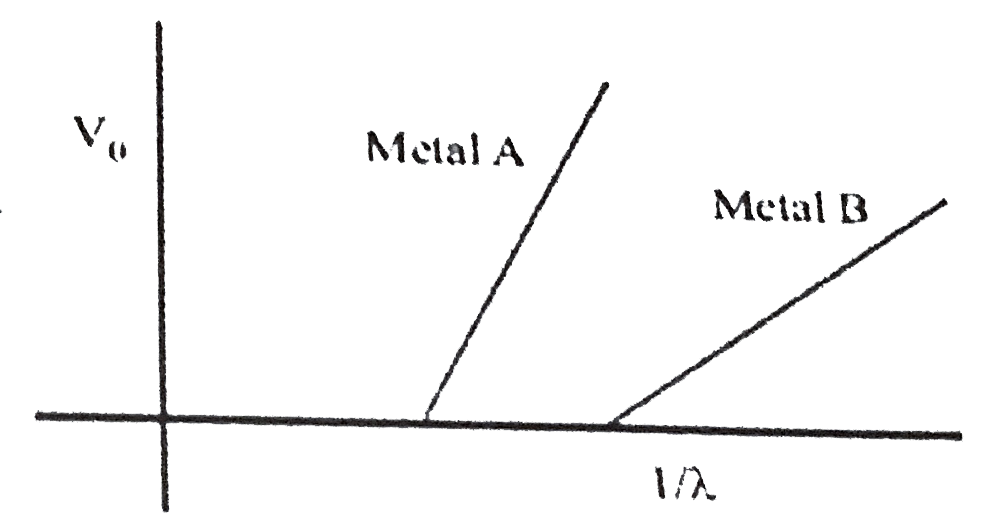Complete Solutions to PHYSICS of chapter DUAL NATURE OF MATTER AND RADIATION of Class 11 book with complete answers and questions
| Class 11 | PHYSICS |
| Chapter | DUAL NATURE OF MATTER AND RADIATION |
| DISHA | PHYSICS |
| Number Of Questions | 45 |
| Academic Year | 2023-24 |
A particle of mass `1 mg` has the same wavelength as an electron moving with a velocity of `3 xx 10^(6) ms^(-1)`. The velocity of the particle is
02:32View SolutionAn electron of mass `m` and a photon have same energy `E`. The ratio of de - Broglie wavelengths associated with them is :
01:47View SolutionAll electrons ejected from a surface by incident light of wavelength 200nm can be stopped before traveling 1m in the direction of a uniform electric field of `4 NC^(-1)`. The work function of the surface is
02:03View SolutionThe maximum kinetic energy of the electrons hitting a target so as to produce X-ray of wavelength 1 Å is
01:25View SolutionAn X-ray tube is operated at 15 kV. Calculate the upper limit of the speed of the electrons striking the target.
01:21View SolutionA and B are two metals with threshold frequencies `1.8xx10^(14)Hz and 2.2xx10^(14)Hz`. Two identical photons of energy of 0.825 eV each are incident on them. Then photoelectrons are emitted in take `h=6.6xx10^(-34)J//s`
02:34View SolutionIf `E_1, E_2 and E_3` represent respectively the kinetic energies of an electron, an `alpha - particle` and a proton each having same de-Broglie wavelength, then
01:40View SolutionWhich of the following when falls on a metal will emit photoelectrons ?
01:20View SolutionThe stopping potential `(V_(0))` versus frequency (v) plot of a substance is shown in figure, the threshold wavelength is
 01:40View Solution
01:40View SolutionA material particle with a rest mass `m_o` is moving with a velocity of light c. Then, the wavelength of the de Broglie wave associated with it is
01:31View SolutionA modern 200 W sodium street lamp emits yellow light of wavelength 0.6 `mum`. Assuming it to be 25% efficient in converting electrical energy to light, the number of photons of yellow light it emits per second is
02:04View SolutionA proton has kinetic energy E = 100 keV which is equal to that of a photon. The wavelength of photon is `lamda_(2)` and that of proton is `lamda_(1)`. The ratio of `lamda_(2)//lamda_(1)` is proportional to
02:48View SolutionIn photoelectric effect the work function of a metal is 3.5 eV. The emitted electrons can be stopped by applying a potential of –1.2 V. Then
05:13View SolutionThe threshold frequency for a metallic surface corresponds to an energy of `6.2eV` and the stopping potential for a radiation incident on this surface is `5 V` . The incident radiation lies in
02:58View SolutionWhen photons of energy `hv` fall on an aluminium plate (of work function `E_(0)`), photoelectrons of maximum kinetic energy `K` are ejected . If the frequency of the radiation is doubled , the maximum kinetic energy of the ejected photoelectrons will be
01:27View SolutionThe work functions for sodium and copper are `2 eV` and `4 eV` . Which of them is suitable for a photocell with `4000 Å` light ?
03:06View SolutionThe maximum velocity of an electron emitted by light of wavelength `lambda` incident on the surface of a metal of work function `phi`, is
Where h = Planck's constant , m = mass of electron and c = speed of light.01:38View SolutionIf the kinetic energy of a free electron doubles , its de - Broglie wavelength changes by the factor
02:02View SolutionRadiations of two photon’s energy, twice and ten times the work function of metal are incident on the metal surface successsively. The ratio of maximum velocities of photoelectrons emitted in two cases is
01:27View SolutionThe cathode of a photoelectric cell is changed such that the work function changes from `(W_(1) to W_(2) (W_(2) gt W_(1))`. If the current before and after change are `I_(1)` and `I_(2)`, all other conditions remaining unchanged , then (assuming `hv gt W_(2)`)
02:29View SolutionMonochromatic radiation emitted when electron on hydrogen atom jumps from first excited to the ground state irradiates a photosensitive material. The stopping potential is measured to be `3.57V`. The threshold frequency of the material is
03:44View SolutionPhotoelectric work- function of a metal is `1 eV.` Light of wavelength `lambda = 3000 Å` falls on it. The photoelectrons come out with maximum velocity
03:42View SolutionWhen the energy of the incident radiation is increased by `20 %` , kinetic energy of the photoelectrons emitted from a metal surface increased from `0.5 eV to 0.8 eV`. The work function of the metal is
02:59View SolutionThe maximum distance between interatomic lattice planes is 15 Å. The maximum wavelength of X-rays which are diffracted by this crystal will be
01:58View SolutionIn photoelectric effect, stopping potential for a light of frequency `n_(1)` is `V_(1)`. If light is replaced by another having a frequency `n_(2)` then its stopping potential will be
01:44View SolutionThe maximum kinetic energy of the photoelectrons ejected from a photocathode when it is irradiated with light of wavelength 440nm is 1eV. If the threshold energy of the surface is 1.9eV, then which of the following statement is/are incorrect?
03:17View SolutionThe work functions of metals `A` and `B` are in the ratio `1 : 2`. If light of frequencies `f` and `2 f` are incident on the surfaces of `A` and `B` respectively , the ratio of the maximum kinetic energy of photoelectrons emitted is ( `f` is greater than threshold frequency of `A , 2f` is greater than threshold frequency of `B`)
02:22View SolutionWhich one of the following graphs represents the variation of maximum kinetic energy `(E_K)` of the emitted electrons with frequency u in photoelectric effect correctly ?
01:24View SolutionThe potential difference that must be applied to stop the fastest photoelectrons emitted by a nickel surface , having work function `5.01 eV` , when ultraviolet light of `200 nm` falls on it , must be
03:05View SolutionX- rays are produced in an X- rays tube operating at a given accelerating voltage . The wavelength of the continuous X- rays has values from
01:46View SolutionElectrons used in an electron microscope are accelerated by a voltage of `25 kV`. If the voltage is increased to `100 kV` then the de - Broglie wavelength associated with the electrons would
02:02View SolutionIn the Davisson and Germer experiment , the velocity of electrons emitted from the electron gun can be increased by
01:57View SolutionLights of two different frequencies whose photons have energies 1 and 2.5 eV, respectively, successively illuminate a metal whose work function is 0.5 eV. The ratio of the maximum speeds of the emitted electrons
01:38View SolutionPhotoelectric emission is observed from a metallic surface for frequencies `v_(1)` and `v_(2)` of the incident light rays `(v_(1) gt v_(2))`. If the maximum values of kinetic energy of the photoelectrons emitted in the two cases are in the ratio of `1 : k` , then the threshold frequency of the metallic surface is
01:57View SolutionWhich of the following is/are false regarding cathode rays?
00:54View SolutionThe ratio of the respective de Broglie wavelengths associated with electrons accelerated from rest with the voltages 100 V, 200 V and 300 V is
02:02View SolutionA `5 W` source emits monochromatic light of wavelength `5000 Å`. When placed `0.5 m` away , it liberates photoelectrons from a photosensitive metallic surface . When the source is moved to a distance of `1.0 m` the number of photoelectrons liberated will be reduced by a factor of
01:49View SolutionIn the photoeletric effect, electrons are emitted
02:39View SolutionThe threshold frequency of a certain metal is `3.3xx10^(14)Hz`. If light of frequency `8.2xx10^(14)Hz` is incident on the metal, predict the cut off voltage for photoelectric emission. Given Planck's constant, `h=6.62xx10^(-34)Js`.
02:06View SolutionIn an experiment on photoelectric effect, a student plots stopping potential `V_(0)` against reciprocal of the wavelength `lamda` of the incident light for two different metals A and B. These are shown in the figure

Looking at the graphs, you can most appropriately say that :01:55View SolutionWhite X-rays are called 'white' due to the fact that:
00:40View SolutionThe wavelength associated with an electron accelerated through a potential difference of `100 V` is nearly
02:10View SolutionMonochromatic light of frequency `6.0 xx 10^(14) Hz` is produced by a laser. The power emitted is `2 xx 10^(-3)` w. The number of photons emitted, on the average, by the sources per second is
01:48View SolutionThe de-Broglie wavelength of neutron in thermal equilibrium at temperature T is
02:12View SolutionWhich of the following cannot be explained on the basis of photoelectric theory ?
02:09View Solution
PHYSICS questions and complete solutions for chapter DUAL NATURE OF MATTER AND RADIATION of DISHA PHYSICS (HINGLISH) of Class 11
